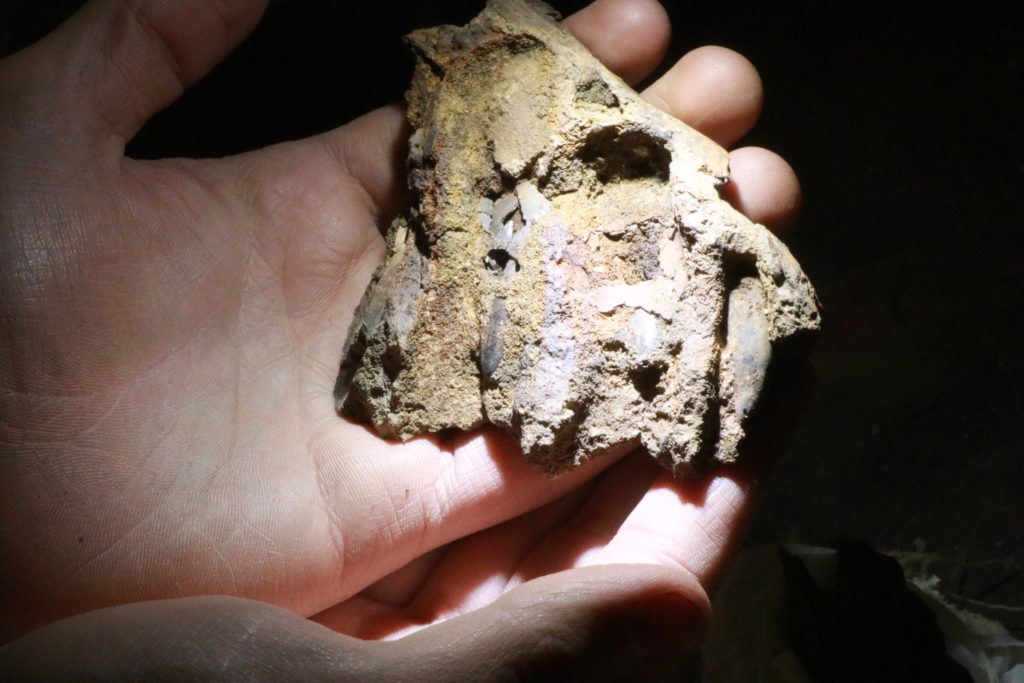CEDAR CITY — Southern Utah University geology major Jonathan Ginouves is about halfway finished preparing a Tyrannosaurus jawbone fossil he found while doing fieldwork near Kanab a few months ago.
Ginouves spoke to Cedar City News while he worked on the fossil using a pneumatic tool called a scribe, which works like a tiny jackhammer to remove bits of sandstone from the fossilized facial bone.
“This looked very, very different when I started,” he added. “It was encased in a 90-pound block of sandstone, which I’ve been slowly chiseling away for the past couple months.”
Ginouves explained why one side of the specimen appears shiny and smooth, while the other looks rough and worn.
“The reason why the bone is actually missing on this side is because this is the side that was exposed to the surface,” he said as he turned over the fossil. “This pretty side was still within the rock when I found this, but the other side would have been exposed to nature, and nature does what it does, and it had weathered away a good portion of the other side.”
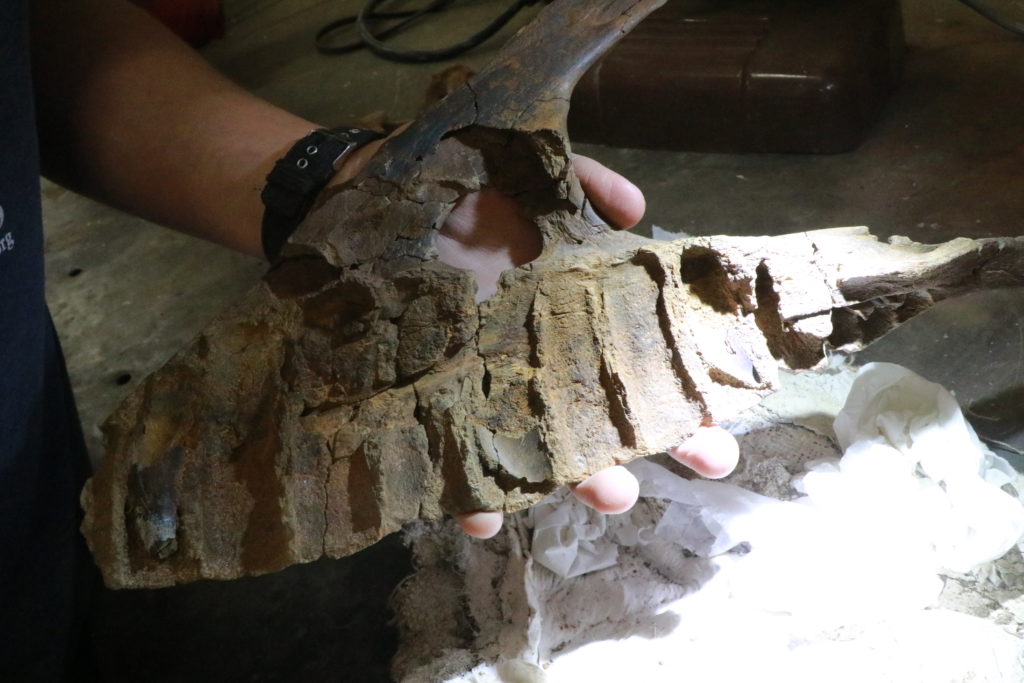
Ginouves also found several smaller broken pieces of fossilized bone nearby, some of which fit neatly into the larger piece.
“Between time and weathering, some of it was lost and irrecoverable,” he said. “But I might be able to reconstruct a good portion of the side using these pieces.”
Ginouves found the specimen in a dry wash near Kanab toward the end of the summer. It’s his third-straight summer working as an intern with the Bureau of Land Management at Grand Staircase Escalante National Monument through SUU’s Intergovernmental Internship Cooperative program.
Ginouves said he was doing some prospecting fieldwork with monument paleontologist Alan Titus and other crew members at the end of the week, when he spotted what looked like a row of tooth sockets embedded in a large piece of sandstone that had long ago tumbled into a dry streambed.
As soon as he saw it, Ginouves said had a pretty good idea what kind of fossil it was.
“I had my suspicions,” he said. “There’s not much that looks like a tyrannosaur face. As soon as I saw the sockets and the impressions of the teeth and the partial teeth in place, I knew, well, there’s only one thing this can be.”
“I called my boss (Dr. Titus) over, because he was out there at the time, to take a look and he confirmed it on the spot, that this is what this was,” Ginouves said. “I was very excited.”
Adding to the excitement of that moment, Ginouves recalled, with a laugh, that there was a rattlesnake lurking nearby, unbeknownst to him.
“I started doing what we have to do, where we take a GPS point of sight so we know where it is and we can go back and recover the specimen,” he said, further recounting the episode:
So I’ve put my pack down, I’m fiddling around and take the GPS. And every time I’m reaching into my pack, I’m hearing this weird hissing noise. I think that it’s air escaping from my water bottle. I just didn’t think much of it. When I’m done, I put everything back in my pack and I lift up my pack. Well, this hissing noise turns into a rattle. I had set my pack down in front of this rock with a rattlesnake beneath it. I blocked its way of getting out. And I’ve been more or less just aggravating it for 15 or 20 minutes. So, I dropped my pack and I hopped out of the wash. I used my pickaxe and I reached down and I fished my pack up and I got out of there. It was quite an eventful way to end the summer.
Ginouves was subsequently given permission by Titus and bureau officials to remove the specimen from the site and perform the time-consuming task of cleaning it up and preparing it for study and exhibition.
He has been working on it in the back shop of the BLM offices in Cedar City, with the makeshift lab being considered an extension of Grand Staircase-Escalante National Monument.

The facial bone Ginouves found is a portion of the upper jaw called the maxilla, he noted. It belongs to a carnivorous species known as Teratophoneus.
“It’s a tyrannosaur species unique to Utah and is about 10 million years older than T. rex,” he said.
“More or less, it looks like T. rex but a little bit smaller,” he added. “This individual, in particular, is probably an adult, but it’s on the small side of adults. I’ve seen this identical bone represented from the same type of dinosaur that’s 6-8 inches larger.”
A fully grown Teratophoneus could measure 30 feet or more from nose to tail, he added. “They were significantly sized animals.”
“They were very successful predators,” he said. “They and the whole group of tyrannosaurs did just fine for themselves for millions and millions and millions of years. And if the extinction that killed off the dinosaurs hadn’t rolled around, they probably would have continued to be successful for a very long time.”
As high as tyrannosaurs were on the food chain, however, there was at least one other animal that was capable of killing and eating them, he noted.
“There’s one contender just down the road from where this was found,” Ginouves said. “There’s a site with some more tyrannosaurs, and the site also includes the bones of a giant alligator.”
That massive alligator, known as Deinosuchus, was up to 40 feet long and thrived alongside Teratophoneus for millions of years during the late Cretaceous period, Ginouves noted.
“I wouldn’t put it beyond the realm of possibility that these gators would occasionally go after tyrannosaurs if they’re feeling like it. They were the same size range, same power, very formidable.”
Ginouves said he still has at least a couple months worth of work remaining on the specimen.
“Once I’m done with this, which will probably take a few more weeks, it’ll go back to the lab in Kanab for Grand Staircase (National Monument), where it’ll be there probably for a good long while,” he said.
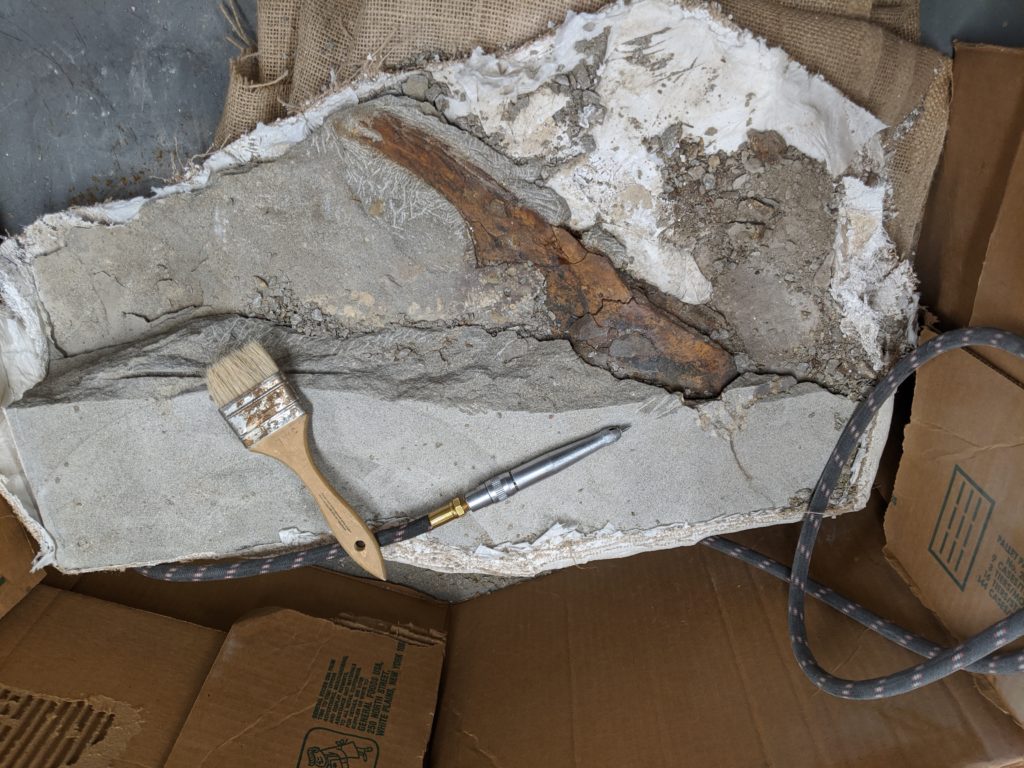
Although there’s typically a backlog of years for fossils awaiting prep work, this specimen was able to receive prioritized attention, he said.
“The reason why this got priority for preparation is not just because it’s cool. It’s because my boss Dr. Titus has a personal interest in research involving tyrannosaurs. This was fast-tracked because it’s directly relevant to his research.”
“If it proves to be significant and useful in research, it’ll probably stay in Kanab for a few years,” he added. “But ultimately, it’s going to end up in the paleontology collection at the University of Utah. That’s the official repository for this fossil. Sooner or later, it’s going to end up there.”
Ginouves, who is majoring in geology with a biology minor, said he hopes this latest hands-on experience with the fossil, along with the rest of his undergraduate work, will serve as a foundation for a higher degree and a possible future career in paleontology.
“This field is typically pretty competitive, but the fact that I’m able to get this early start in field experience in this paleontology program and be here getting a good education, I think, speaks pretty well for my future career possibilities,” he said. “I already more or less have my foot in the door, and so I’ve got high hopes for the future. I expect that this will open doors for me to pursue research of whatever type I’d like.”
Click on photo to enlarge it, then use your left-right arrow keys to cycle through the gallery.
Tyrannosaur facial bone found by Jonathan Ginouves near Kanab, Utah is seen embedded in sandstone prior to its removal from the surrounding rock material, October 2020 | Photo courtesy of Jonathan Ginouves, St. George News / Cedar City News Tyrannosaur facial bone found by Jonathan Ginouves near Kanab, Utah is seen embedded in sandstone prior to its removal from the surrounding rock material, October 2020 | Photo courtesy of Jonathan Ginouves, St. George News / Cedar City News Tyrannosaur facial bone found by Jonathan Ginouves near Kanab, Utah is seen embedded in sandstone prior to its removal from the surrounding rock material, October 2020 | Photo courtesy of Jonathan Ginouves, St. George News / Cedar City News Tyrannosaur facial bone found by Jonathan Ginouves near Kanab, Utah is seen embedded in sandstone prior to its removal from the surrounding rock material, October 2020 | Photo courtesy of Jonathan Ginouves, St. George News / Cedar City News Tyrannosaur facial bone found by Jonathan Ginouves near Kanab, Utah is seen embedded in sandstone prior to its removal from the surrounding rock material, October 2020 | Photo courtesy of Jonathan Ginouves, St. George News / Cedar City News For illustrative purposes, this undated image of a displayed fossil of a Tyrannosaurus rex skull has a red outline showing location of the maxilla bone. | Image courtesy of Jonathan Ginouves, St. George News / Cedar City News Southern Utah University student Jonathan Ginouves works with a fossilized tyrannosaur bone he found near Kanab. Photo taken in Cedar City, Utah, Dec. 8, 2020 | Photo by Jeff Richards, St. George News / Cedar City News Southern Utah University student Jonathan Ginouves works with a fossilized tyrannosaur bone he found near Kanab. Photo taken in Cedar City, Utah, Dec. 8, 2020 | Photo by Jeff Richards, St. George News / Cedar City News Southern Utah University student Jonathan Ginouves works with a fossilized tyrannosaur bone he found near Kanab. Photo taken in Cedar City, Utah, Dec. 8, 2020 | Photo by Jeff Richards, St. George News / Cedar City News Southern Utah University student Jonathan Ginouves holds up a piece of fossilized tyrannosaur bone he found near Kanab. Photo taken in Cedar City, Utah, Dec. 8, 2020 | Photo by Jeff Richards, St. George News / Cedar City News Southern Utah University student Jonathan Ginouves shows tooth sockets in a fossilized tyrannosaur bone he found near Kanab. Photo taken in Cedar City, Utah, Dec. 8, 2020 | Photo by Jeff Richards, St. George News / Cedar City News


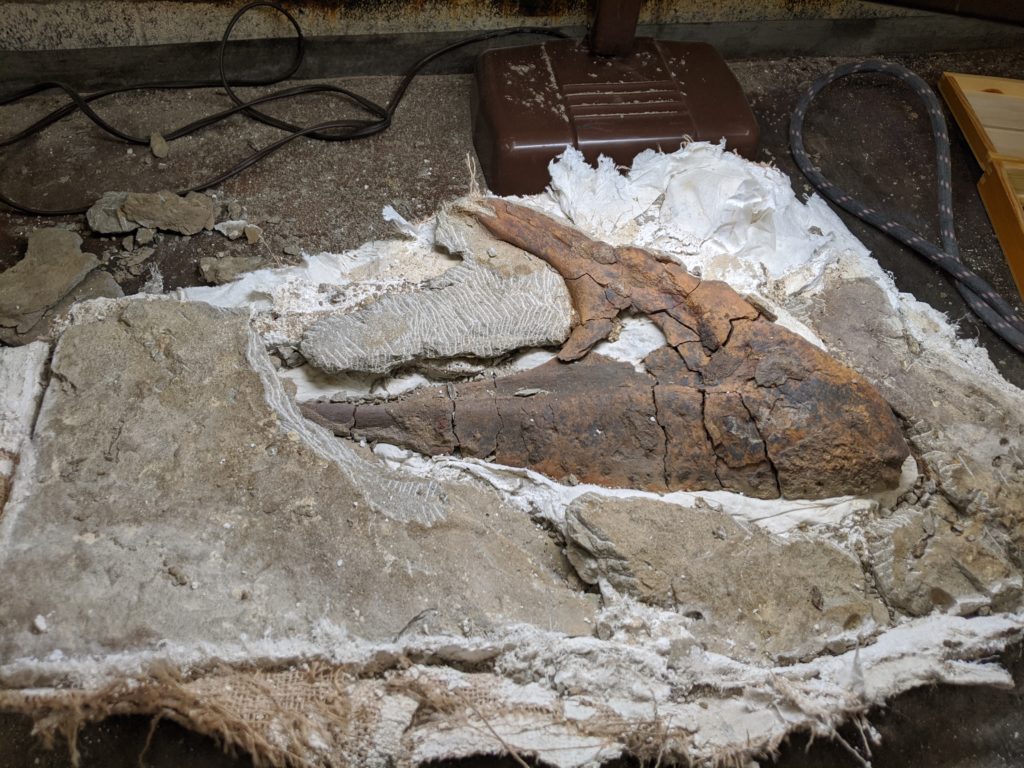



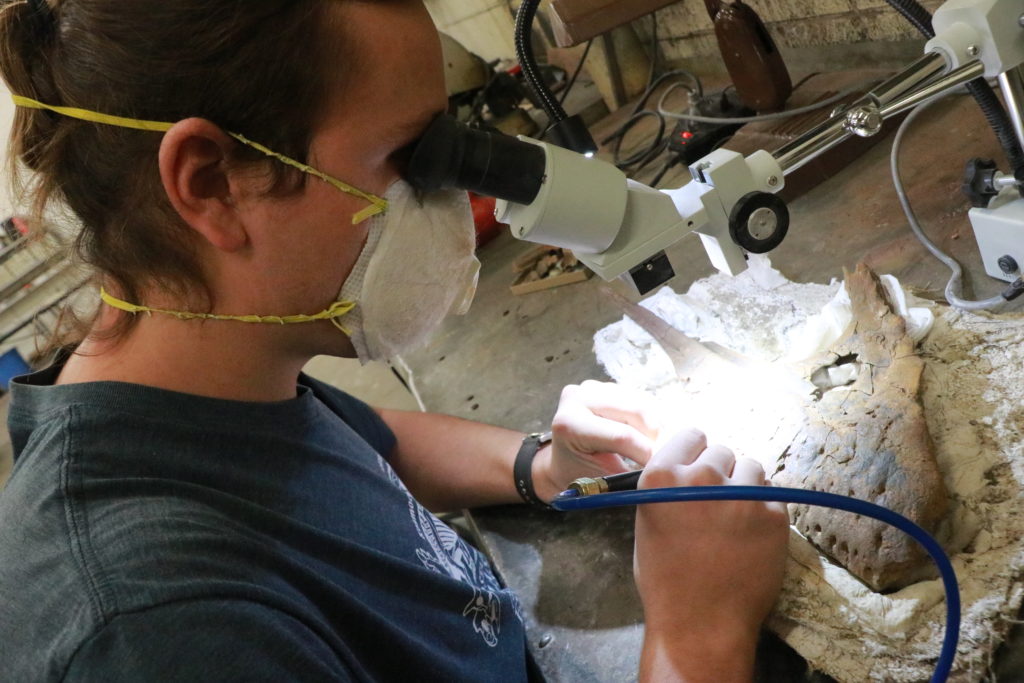
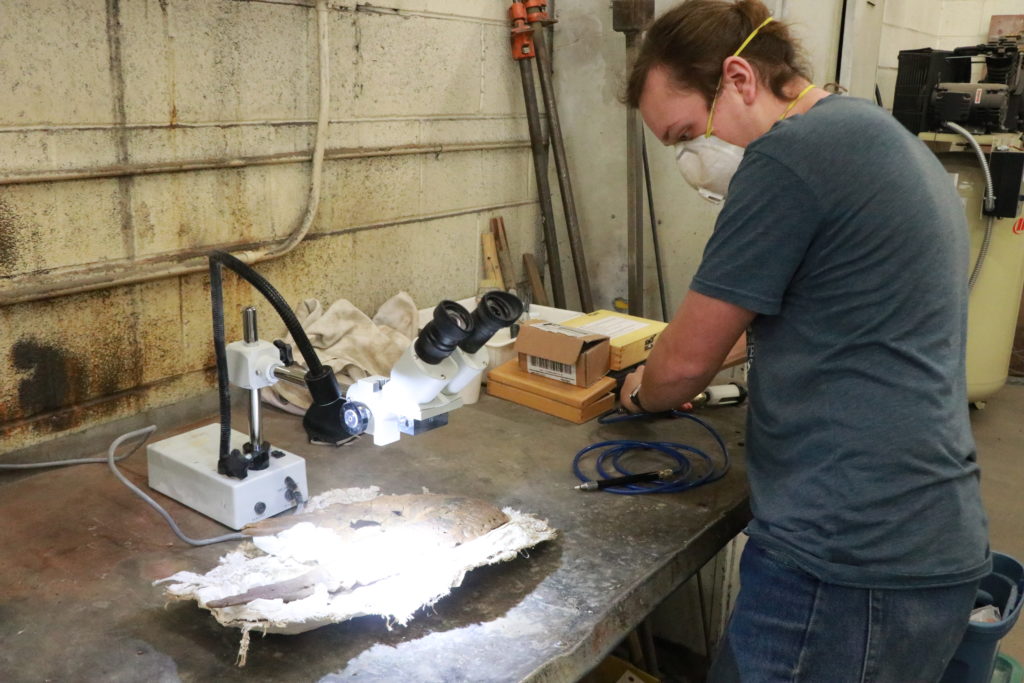


Copyright St. George News, SaintGeorgeUtah.com LLC, 2020, all rights reserved.
